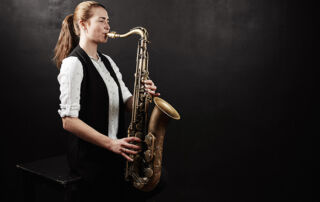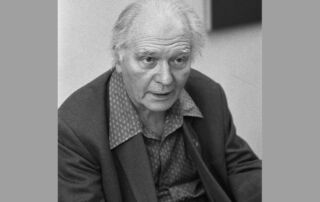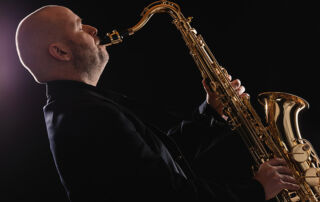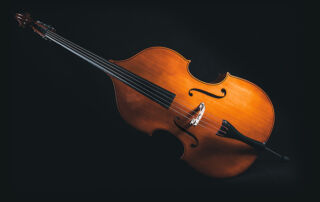Adagio for Strings by Samuel Barber
Adagio for Strings by Samuel Barber is a musical work for string orchestra in B-flat minor, arranged in 1936 by the composer from his first string quartet, which was created the same year.
Following his meeting with Toscanini during his stay in Europe, he sent him this score to seek his opinion.
The conductor returned it to him without a word. Barber concluded that the piece was not good enough.
In reality, Toscanini had already memorised the Adagio and was preparing to have it performed by his orchestra.
The national radio broadcast of the piece was a success for an American work.
This piece is featured in Amélie, Platoon, and The Elephant Man.
Handel’s Sarabande, HWV 437
Handel's Sarabande, HWV 437, is a famous Baroque sarabande for solo harpsichord, published in 1733. It is taken from Suite No. 4 in D minor, HWV 437, part of his *Nine Harpsichord Suites* from 1733.
Its version for string orchestra, timpani, and basso continuo, arranged by Leonard Rosenman for Stanley Kubrick’s film Barry Lyndon in 1975, became one of the most famous film scores in cinema history, winning the Academy Award for Best Original Score in 1976.
Thus Spoke Zarathustra, Op. 30, by Richard Strauss
Thus Spoke Zarathustra, Op. 30, by Richard Strauss, is a symphonic poem inspired by the philosophical work *Thus Spoke Zarathustra* by the German philosopher Friedrich Nietzsche.
Its grandiose introduction became famous through its use in the iconic science fiction film 2001: A Space Odyssey by Stanley Kubrick and Metro-Goldwyn-Mayer in 1968.
The Ride of the Valkyries by Richard Wagner
The Ride of the Valkyries by Richard Wagner is a famous operatic piece, dramatic, exalted, and grandiose, written for symphony orchestra.
It serves as the prelude to Act III, Scene 1, of his opera Die Walküre, the second of the four operas in The Ring of the Nibelung. It is named after the Valkyries, the warrior maidens of Germanic and Norse mythology.
Often performed in concert independently of the opera, it was notably used as the anthem of the Luftwaffe (the German Air Force of the Third Reich) during the Second World War. It also became one of the most famous pieces of film music in cinema history, featured as the soundtrack for an American Bell UH-1 Iroquois helicopter attack raid in the Vietnam War, in Francis Ford Coppola's 1979 film Apocalypse Now.
The Four Seasons by Antonio Vivaldi
The Four Seasons by Antonio Vivaldi (Spring, Summer, Autumn, and Winter) are the first four Baroque concertos from his set of twelve violin concertos, composed on 17 June 1724 and published in 1725 in Amsterdam.
Their first public performance took place in London and at the Concert Spirituel in Paris in early 1728.
Since its rediscovery in the mid-20th century, this universal hymn to nature has been regarded as one of the greatest works in the history of Western classical music.
The Moldau by Bedřich Smetana
Ma Vlast (My Homeland) is a cycle of six symphonic poems composed between 1874 and 1879 by the Czech composer Bedřich Smetana. It references the patriotic founding myth of his homeland, Bohemia (now the Czech Republic).
At the age of 50 in 1874, having become completely deaf due to syphilis, Bedřich Smetana devoted himself exclusively to composition. Over the course of five years, until 1879, he composed the famous cycle of six symphonic poems *Ma Vlast* (*My Homeland*). Staying true to his patriotic convictions, he portrayed the landscapes and enchanting legends of his homeland, Bohemia, as well as the history of its capital, Prague.
The second poem, Vltava (The Moldau), is named after the river that flows through Prague and much of Bohemia before joining the Elbe, of which it is a tributary.
After depicting the two springs that form the Vltava, the main theme emerges, followed by scenes evoking forests, peasant dances set to the rhythms of traditional Bohemian Slavonic polkas, and the magical nights of Bohemia.
The turbulence of the orchestra reflects the geological chaos the river encounters before its majestic arrival in Prague.
Hungarian Rhapsody No. 2 by Franz Liszt
Hungarian Rhapsody No. 2 by Franz Liszt is the second in a series of nineteen Hungarian Rhapsodies. It is by far the most famous of the series, and few piano solos have achieved such widespread popularity.
It provides pianists with the opportunity to showcase their exceptional virtuoso skills while offering the listener an immediate and irresistible appeal.
It is regarded as one of the most technically demanding works in the solo piano repertoire.
Autant sous la forme originale jouée au piano solo que dans la version orchestrée, cette composition est appréciée et très utilisée dans les dessins animés. Ses thèmes ont également servi de base à plusieurs chansons populaires.
The Blue Danube, Op. 314, by Johann Strauss II (the son)
The Blue Danube, Op. 314, by Johann Strauss II (the son), is a famous Viennese waltz for symphony orchestra.
A symphonic poem dedicated to the Danube, it is one of Johann Strauss II's most famous works. It is regularly performed, notably by the Vienna Philharmonic Orchestra, as part of the encores at the traditional New Year’s Concert in Vienna.
Considérée comme un second hymne national de Vienne et de l’Autriche, elle est également une des musiques de film les plus célèbres de l’histoire du cinéma avec sa reprise de 2001, l’Odyssée de l’espace de Stanley Kubrick en 1968.
Hungarian Dance No. 5 in F-sharp minor by Johannes Brahms
Hungarian Dance No. 5 in F-sharp minor by Johannes Brahms is undoubtedly the most famous piece among the twenty-one Hungarian Dances.
Published successfully by his publisher N. Simrock in 1869, it was later adapted, arranged, and orchestrated, notably by the German composer Albert Parlow.
Cette pièce est utilisée dans Le Dictateur de Charles Chaplin, le retour du grand blond.
The Requiem Mass in D minor by Wolfgang Amadeus Mozart
The Requiem Mass in D minor by Wolfgang Amadeus Mozart, composed in 1791, is a work from the final year of Mozart’s life, though it is not exactly his last composition.
Only about two-thirds of it was completed by Mozart himself, as his death interrupted its composition. Nevertheless, it remains one of his major and most iconic works.
His widow, Constanze, requested Franz Jakob Freystädtler, Joseph Eybler, and later Franz Xaver Süßmayr to complete the score.
The Requiem has given rise to numerous legends, both due to the unusual circumstances of its commission and the difficulty in determining exactly which parts were composed by Mozart.






